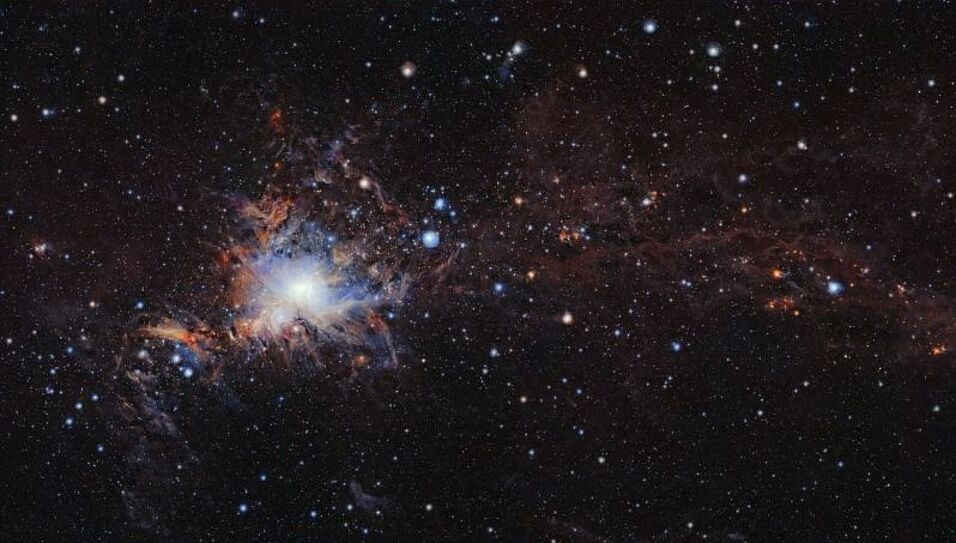“The Orion A molecular cloud provides a unique opportunity to resolve the processes connected with the formation of stars”, says Stefan Meingast, lead author of the paper published in Astronomy and Astrophysics. The stellar nursery in Orion A is invisible to the naked eye but extends for approximately eight degrees to the south of the familiar part of Orion known as the sword. The region is about 100 times bigger than the full moon in the sky and provides astronomers with unique opportunities to study young low- and high-mass stars at the same time in unparalleled detail.
Observations for the Vienna Survey in Orion (VISION) have been made with the VISTA telescope (Visible and Infrared Survey Telescope for Astronomy) of the European Southern Observatory ESO, the world’s largest dedicated near-infrared survey telescope located in the Atacama Desert in northern Chile. To map the entire region more than 15,000 individual images have been taken, which were later processed and stitched together to form a gigantic image mosaic.
Catalogue of 800,000 stars
The project led to a catalogue containing almost 800,000 individually identified stars, covering both familiar objects and new discoveries as well as young stellar objects and distant galaxies. New discoveries include five new young stellar object candidates and ten candidate galaxy clusters.
“Our catalog of objects is a very good basis for future studies of star formation processes towards Orion. It is vital to understanding fundamental concepts of physical processes in young star-forming regions and will help to eventually unravel the mysteries of our cosmic ancestry”, says Stefan Meingast.
Based on the VISION project a new project under the lead of the astronomers of the University of Vienna will start in April. The new ESO public survey VISIONS – VISTA Star Formation Atlas aims to map many nearby star forming regions in equally impressive detail.
The paper is entitled VISION - Vienna survey in Orion I. VISTA Orion A Survey, by S. Meingast et al., published in the journal Astronomy & Astrophysics: aanda.org/articles/aa/abs/2016/03/aa27160-15/aa27160-15.html
Video: Visible/infrared comparison of views of the Orion A molecular cloud (Credits: ESO/VISION survey/Digitized Sky Survey 2)

